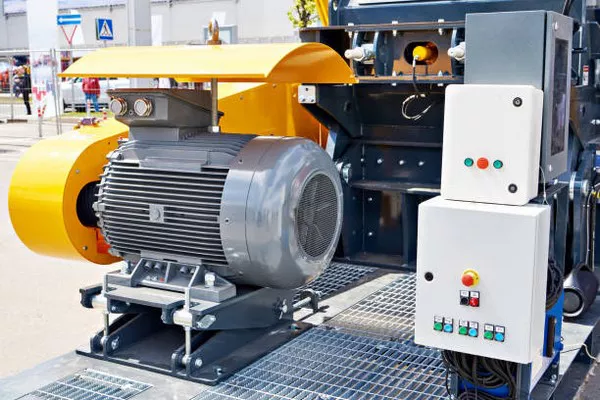Power generation is a critical component of modern society, providing the energy necessary to fuel our homes, businesses, and industries. Generators play a pivotal role in this process by converting various forms of energy into electrical power. In this article, we will delve into the intricate mechanisms that power generators employ and the diverse sources of energy that drive them.
Basic Principles of Power Generation
At its core, a generator is a device that transforms mechanical energy into electrical energy. The fundamental principle behind this process is electromagnetic induction, a discovery credited to Michael Faraday in the early 19th century. Faraday’s law states that a change in magnetic field within a closed loop of wire induces an electromotive force (EMF), or voltage, in the wire.
Key Components of a Generator
Rotor (Armature): The rotor, also known as the armature, is a crucial component of the generator. It consists of a coil of wire that is rotated within a magnetic field. This rotation induces an electric current in the wire, creating the basis for electricity generation.
Stator: The stator is a stationary component that surrounds the rotor. It contains a set of coils or windings that produce a magnetic field when an electric current flows through them. The interaction between the magnetic fields of the rotor and stator is essential for power generation.
Exciter: Generators often include an exciter, a small electric generator that produces the initial direct current (DC) needed to establish the magnetic field in the rotor. This magnetic field sets the stage for the generation of alternating current (AC) in the main generator.
Powering Generators: Sources of Mechanical Energy
Generators are designed to harness various forms of mechanical energy, and the choice of energy source depends on factors such as availability, efficiency, and environmental impact. Let’s explore some common sources of mechanical energy that power generators.
Steam Power
Steam power has been a cornerstone of electricity generation for over a century. In a steam-powered generator, heat is used to produce steam, which then drives a turbine connected to the generator. The steam turbine’s rotation induces the rotation of the generator’s rotor, resulting in the generation of electricity. Steam power is widely used in coal, natural gas, and nuclear power plants.
Hydroelectric Power
Hydropower harnesses the energy of flowing or falling water to generate electricity. In a hydroelectric generator, water is channeled to turn the blades of a turbine, which is connected to the generator. The turbine’s rotation, facilitated by the force of the flowing water, produces mechanical energy that is converted into electrical energy.
Wind Power
Wind turbines utilize the kinetic energy of the wind to generate electricity. When the wind blows, it causes the turbine blades to rotate, driving the generator. The generator then converts the mechanical energy from the rotating blades into electrical power. Wind power is an increasingly popular and environmentally friendly source of electricity.
Internal Combustion Engines
Generators powered by internal combustion engines, often fueled by diesel, natural gas, or gasoline, are widely used for backup power and in remote locations. In these generators, the engine’s crankshaft is connected to the generator, converting the rotational motion into electrical power. Internal combustion generators are known for their portability and rapid response.
Gas Turbines
Gas turbines, also known as combustion turbines, operate on a similar principle to steam turbines but use gases instead of steam to drive the turbine blades. These turbines are commonly used in aviation and power plants where a compact and efficient source of mechanical energy is required.
Efficiency Considerations
The efficiency of a generator is a critical factor in determining its overall effectiveness in converting mechanical energy into electrical power. Efficiency is influenced by several factors, including the type of generator, the energy source, and the design and maintenance of the system.
Carnot Efficiency
The Carnot efficiency, named after French physicist Sadi Carnot, represents the maximum possible efficiency of a heat engine operating between two temperature reservoirs. In practical terms, no generator can achieve 100% efficiency due to the inherent losses and imperfections in any real-world system.
Conversion Efficiency
The conversion efficiency of a generator is the ratio of the electrical power output to the mechanical power input. Modern generators, depending on the technology and application, typically achieve conversion efficiencies ranging from 30% to 50%. Advances in technology and design continue to push the boundaries of generator efficiency.
Maintenance and Operation
Regular maintenance and proper operation are crucial for maintaining high generator efficiency. Over time, wear and tear, as well as environmental factors, can impact the performance of generators. Timely inspections, lubrication, and addressing any issues promptly contribute to prolonging the lifespan and optimizing the efficiency of generators.
SEE ALSO How Much Fuel Does a kW Generator Use?
Conclusion
Generators are indispensable in our quest for a reliable and continuous power supply. Understanding the mechanisms behind these devices sheds light on the intricate processes that enable the conversion of various forms of mechanical energy into electrical power. Whether driven by steam, water, wind, internal combustion engines, or gas turbines, generators play a crucial role in meeting the growing demand for electricity in our modern world. As technology continues to advance, so too will the efficiency and sustainability of power generation methods, ensuring a brighter and more electrified future for generations to come.

